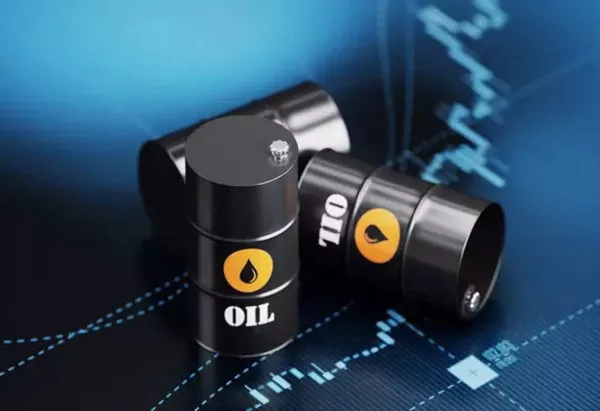In the fast-paced world of financial markets, it is essential to understand the various terminologies and acronyms that frequently appear. One such acronym is “CME,” which is commonly associated with futures trading.
1. Understanding CME
1.1 Definition of CME
CME stands for “Chicago Mercantile Exchange.” It is one of the world’s largest and most influential financial exchanges, headquartered in Chicago, Illinois, USA. Founded in 1898, CME has a rich history of facilitating the trading of various financial instruments, with a primary focus on futures contracts. Over the years, CME has grown into a global marketplace where investors, traders, and institutions come together to buy and sell financial derivatives.
1.2 Evolution and Growth
Since its inception, CME has continuously evolved and adapted to changing market dynamics. Initially established as the Chicago Butter and Egg Board, the exchange shifted its focus to agricultural commodities futures. As the financial landscape expanded, CME introduced futures contracts for various asset classes, including equity indexes, interest rates, foreign currencies, and energy products. Today, CME offers an extensive range of futures contracts that cover a wide spectrum of financial instruments.
1.3 Importance of CME
CME’s significance in the financial industry cannot be overstated. As a leading exchange, it plays a crucial role in providing liquidity and price discovery for numerous global markets. The exchange’s diverse product offerings attract a broad range of participants, from individual retail traders to large institutional investors. Moreover, CME’s standardized and regulated trading environment instills confidence in market participants, ensuring fair and transparent trading practices.
2. CME Futures Explained
2.1 What Are Futures Contracts?
Before we delve deeper into CME futures, it is essential to understand the concept of futures contracts. A futures contract is a legally binding agreement to buy or sell a specific asset at a predetermined price on a future date. These contracts enable market participants to hedge against price fluctuations and speculate on the future direction of an asset’s value.
2.2 Range of CME Futures Contracts
CME offers an extensive array of futures contracts, covering various asset classes. Some of the most popular futures contracts traded on the exchange include:
– Equity Index Futures: These contracts allow investors to trade on the performance of stock market indexes like the S&P 500 and Nasdaq 100.
– Interest Rate Futures: Traders can speculate on the future movement of interest rates, influencing products like Treasury bonds and Eurodollars.
– Foreign Currency Futures: Investors can participate in currency markets by trading contracts based on exchange rates, such as the Euro/US Dollar (EUR/USD) pair.
– Energy Futures: These contracts provide exposure to commodities like crude oil, natural gas, and gasoline.
2.3 Advantages of Trading CME Futures
Trading CME futures offers several advantages to market participants. One of the key benefits is liquidity – CME’s deep market ensures that there are always buyers and sellers available, resulting in tighter bid-ask spreads and reduced slippage. Additionally, futures trading allows for leverage, enabling traders to control a larger position with a relatively smaller capital outlay. Furthermore, futures contracts are standardized, making them easily accessible and transparent for all participants.
3. How CME Futures Work
3.1 Contract Specifications
Each CME futures contract has specific terms and conditions that traders must adhere to. These specifications include the contract size, tick size (minimum price movement), expiration date, and the type of settlement (cash or physical delivery). Understanding these specifications is crucial for effective futures trading.
3.2 Margins and Leverage
To trade CME futures, participants are required to deposit an initial margin, which acts as collateral for the positions held. Margin requirements vary depending on the contract and market conditions. The use of leverage allows traders to amplify their potential returns, but it also comes with increased risk, as losses can be magnified as well.
3.3 Price Movements and Trading Hours
CME futures prices are subject to market forces, and their values fluctuate based on supply and demand dynamics. The trading hours for different contracts may vary, so it is essential to be aware of the specific market hours for the instruments you wish to trade.
4. How to Trade CME Futures
4.1 Choosing a Trading Platform
To trade CME futures, you need access to a reliable and user-friendly trading platform that supports futures trading. Many online brokerage platforms offer access to CME markets, providing traders with real-time data, advanced charting tools, and order execution capabilities.
4.2 Developing a Trading Strategy
Successful futures trading requires a well-defined trading strategy. Traders must conduct thorough research and analysis, use risk management techniques, and remain disciplined in their approach. Whether you are a day trader or a long-term investor, having a robust trading plan is essential for consistent performance.
4.3 Risk Management
Trading futures involves inherent risks, and it is crucial to manage these risks effectively. Implementing risk management tools, such as stop-loss orders, can help limit potential losses and protect your capital.
5. Conclusion
In conclusion, CME stands for the Chicago Mercantile Exchange, a leading global financial exchange that offers a diverse range of futures contracts. These contracts provide traders and investors with opportunities to participate in various asset classes, hedge against price fluctuations, and speculate on future market movements. Understanding how CME futures work, the advantages they offer, and the importance of risk management are essential for anyone venturing into futures trading. Remember to conduct thorough research, develop a sound trading strategy, and choose a reliable trading platform to maximize your potential in the exciting world of CME futures.


